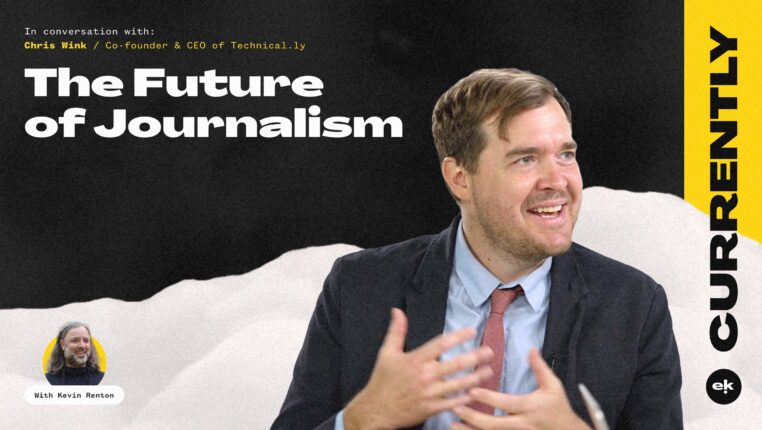Stop me if you’ve heard this one already. Visuals are kind of an important part of your digital marketing publishing. Consider:
- Content with relevant images gets 94% more views than content without relevant images.
- The last three breakout social media channels, Instagram, Pinterest, and Snapchat, are based purely on visual communication.
- When people hear information, they’re likely to remember about 10% of that information three days later. But, if a relevant image is paired with that same information, people retain 65% of the information three days later.
But while most marketers understand that visual assets are crucial to their digital publishing, it still feels like too many schools, colleges, and non-profits are mailing it in when it comes to choosing photography for their digital content.
And look, I get it. It’s easy to look at the information above and agree that visuals are important. It’s another challenge altogether to consistently source those photos, either due to limited personnel resources, budgets resources, or both.
Luckily, there are a number of high-quality, royalty-free photography sources out there. Below, we’ve identified five such sources (plus a super awesome bonus option) to help you avoid the stock photo blues.
Your Royalty-Free Photography Sources
Unsplash: Unsplash is the gold standard for high-quality royalty-free photos. Unsplash offers thousands of photos for download, all using the Creative Commons Zero license, which means you can use them for both commercial and personal use. No cost, no royalties, no attribution. Aside from its expansive library, Unsplash separates itself from the competition by updating its library every week, offering an impressive search feature, and showcasing collection boards. The collection boards are particularly useful when you know the type of photo you want, but not the keyword phrase you should use to find it. For example, photos that work well as a graphic background.
Pixabay: Pixabay has really upped its game of late. Pixabay now offers more than 700,000 photos, also using the Creative Commons Zero license. In addition to photos, Pixabay’s content library includes Illustrations, vector graphics, and videos, and users can search by type of content and keyword, which is a nice touch. In my own experiences, I’ve found Pixabay to be a great resource when I’m looking for a photo that’s more unique than a stock photo, but not full-on artistic in style.
Related: Stories as told by Instagram and Snapchat
Instagram’s latest feature, “Stories,” feels…familiar. Get the scoop on the differences and similarities between the stories being told by Instagram and Snapchat.
Death to the Stock Photo: Death to the Stock Photo was my original go-to source when I wanted a photo that wasn’t also being used by every other company I followed online. Death to the Stock Photo delivers users new free photos every month. In addition, you can now download “packs” of photos, which are featured on the homepage. Death to the Stock Photo is a bit unique among its competitors, as they are experimenting with the freemium model, in which users can sign up on a basic or premium plan, which impacts the amount of content you can download. If that’s a turnoff, I should probably also share that a percentage of profit from premium memberships is put into their community to fund photography trips, creative projects, etc. So think of using Death to the Stock Photo like a win-win.
TheStocks: If you don’t want to hunt each site individually, The Stocks acts like a hub for several different royalty free stock photo libraries, including Pixabay and Unsplash. There are caveats, of course. There are sponsored libraries to navigate through, some of the libraries are very specific, and others haven’t been updated in quite a while. Still, if you’re someone who falls in love with a resource on a Monday, and then forgets what that resource was by Friday, The Stocks can be a welcomed relief.
RawPixel: RawPixel is a newcomer to this category, but it already boasts a nice collection of photography. RawPixel’s library features the traditional royalty-free photo categories – hipsters in black and white photos, overhead shots of office desks – but also offers graphics and a few photo categories, like athletics, that tend to be harder to find on other sites. They also feature photos in different orientations, rather than the traditional horizontal layout found on other sites. The drawbacks? You can’t download any photos without signing up for an account, there’s no search feature, and viewing the photos in a larger format is only achieved by changing the library sorting method entirely, which is a bit of a pain. Hey, everyone goes through growing pains.
Bonus Source
Yourself: Well, maybe not you specifically, but when you’re searching for alternatives to stock photography, don’t forget to look inward. If you go down this route, a few tips. Plan a date ahead of time, check the weather forecast as that date approaches, and have a shot list documented. If you’re having trouble coming up with photo locations to visit, search for mentions or tagged photos of your school or non-profit on Instagram. User-generated photos can serve as excellent sources of inspiration.
Finally, be flexible. If you plan too much of your photo shoot out ahead of time, you’ll end up with exactly the kind of stock photo you were trying to avoid in the first place.
If you’re reading this on behalf of a school or university, contact your staff photographer. Try to book time with them to walk around campus, taking a multitude of photos that you can return to down the road. Remember, nobody knows your campus and your brand like you do. Use that to your advantage.
If you’re reading this on behalf of a non-profit institution, you likely don’t have the advantage of a staff photographer. What you likely do have, however, is a vast network on volunteers, willing to donate their time and talents to your cause. Once you have a photographer you can work with, offer him or her a few sources of inspiration that embody what you’re hoping to gain from your photo shoots. To start, plan to capture imagery at special events or focus on the beneficiaries of your non-profit.
Whether you ultimately decide to create and curate your visuals, remember to focus on your brand and what it stands for. Don’t settle for a photo that fails to represent that attitude, don’t settle for not using a visual altogether, and don’t settle for stock photography. Your content is too important to be represented by a group of students playing the guitar under a tree.



